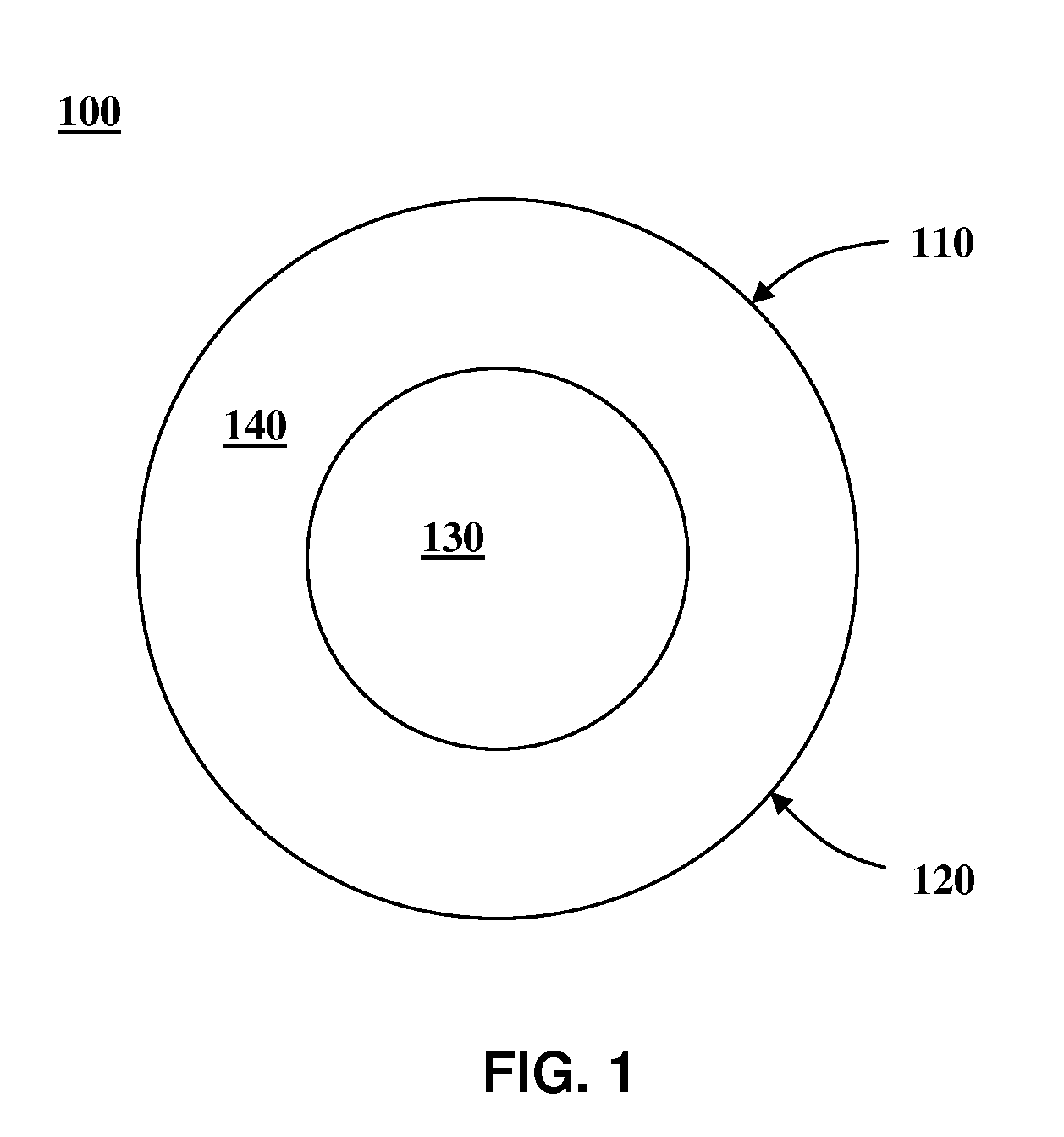Polymer compositions suitable for intraocular lenses and related methods
a technology of polymer compositions and intraocular lenses, applied in the field of polymer compositions suitable for intraocular lenses, can solve the problems of reduced visual acuity, corneal damage, scarring or abrasion, etc., and achieve the effects of reducing the hydride/vinyl ratio, preventing complete curing, and reducing or eliminating glar
- Summary
- Abstract
- Description
- Claims
- Application Information
AI Technical Summary
Benefits of technology
Problems solved by technology
Method used
Image
Examples
example 1
Preparation of Polymer Discs
[0072]In one method for making a polymer, 129.43 grams of octaphenylcyclotetrasiloxane was placed in a preheated 1000 mL reaction kettle at 105° C. (+ / −10° C.). The mechanical stirrer was turned on and the whole system purged with nitrogen for at least 30 minutes. Next, 666.16 grams of octamethylcyclotetrasiloxane and 4.50 grams of 1.3 divinyl tetramethyl disiloxane were added to the reaction kettle. Then, 3.14 grams of tetramethylammoniun siloxanolate was added to the reaction kettle. Stirring continued for at least 18 hours at 105° C. (+ / −10° C.). The temperature of the kettle was then raised to 150° C. (+ / −20 C) for at least 5 hours. After cooling, a clear silicone fluid was filtered through a 0.2 micron filter.
[0073]A Pope 2″ Wiped-Film stills unit was used to remove the volatile components of the above silicone fluid by setting the chiller temperature to 5° C., still body temperature to 160° C., the vacuum range to 0.8-2.2 torr and the rotor speed to...
example 2
[0078]A gel was prepared in accordance with Example 1; however, instead of using platinum tetravinyltetramethylcyclotetrasiloxane complex, 0.3% platinum carbonyl cyclovinylmethylsiloxane complex was used to prepare the silicone gel. The pot life of the silicone gel increased 1 hour (from 7 hours to 8 hours) without significantly changing the modulus of the final gel.
example 3
[0079]A divinyl terminated silicone fluid in accordance with Example 1; however, it was prepared using two different cross-linkers, phenyltris(dimethylsiloxy)silane (SIP) and tetrakis-(dimethylsiloxy)silane (SIT). The amount of cross-linker used was varied to prepare fluids with four different H / V ratios. Vinyl content of the silicone fluids was determined by the GPC method. A platinum-cyclovinylmethylsiloxane complex was used to cure the polymers. Moduli of the sixteen polymers was measured both pre-extraction and post static extraction. It was found that by varying the amount of cross-linker used in the vinyl fluid, silicone materials with different moduli could be obtained. It was also surprising to find that the modulus of the materials was also affected by the amount of catalyst. The curing time did not appear to be a factor in the modulus of the cured samples. The specifics of the experiment follow.
[0080]Divinyl silicone fluid (B36C) was mixed with two cross-linkers, SIP and S...
PUM
| Property | Measurement | Unit |
|---|---|---|
| solid-elastomeric transition temperatures | aaaaa | aaaaa |
| diameter | aaaaa | aaaaa |
| RI | aaaaa | aaaaa |
Abstract
Description
Claims
Application Information
 Login to View More
Login to View More - R&D
- Intellectual Property
- Life Sciences
- Materials
- Tech Scout
- Unparalleled Data Quality
- Higher Quality Content
- 60% Fewer Hallucinations
Browse by: Latest US Patents, China's latest patents, Technical Efficacy Thesaurus, Application Domain, Technology Topic, Popular Technical Reports.
© 2025 PatSnap. All rights reserved.Legal|Privacy policy|Modern Slavery Act Transparency Statement|Sitemap|About US| Contact US: help@patsnap.com



